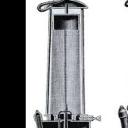Yahoo Answers is shutting down on May 4th, 2021 (Eastern Time) and beginning April 20th, 2021 (Eastern Time) the Yahoo Answers website will be in read-only mode. There will be no changes to other Yahoo properties or services, or your Yahoo account. You can find more information about the Yahoo Answers shutdown and how to download your data on this help page.
Trending News
If a feline were to possess a hyoid bone that is both flexible and hardened, could it then be able to both purr and roar?
If a species of feline could have a hyoid bone that is both flexible like that of a big cat (which is what allows lions, tigers, jaguars, and leopards to roar in the first place) yet hardened like that of smaller cats (which is what allows cougars, cheetahs, house cats, lynxes, and bobcats to purr to begin with), would the feline species in question by any chance be able to produce both a purring AND a roaring sound?
2 Answers
- Anonymous3 months agoFavorite Answer
Roaring cats have the hyoid bone in a different position, much farther down the throat than other cats, for them to roar. The snow leopard is a close relative of the tiger, and it has a hyoid bone that is intermediate in position between roaring cats and those that purr, but it does not roar. The snow leopard is probably a degenerate roaring cat, meaning its ancestors once roared but because it lives in a marginal habitat and does not defend a territory (why bother defending a territory when there is little food in any small area and one has to move long distances regularly to find food), there is therefore a lack of negative selection for individuals whose hyoid bone no longer moves to the required position during development. I predict that if enough specimens have been dissected, then it may show individual variation in the position of the hyoid bone in the snow leopard, since the position of the hyoid bone is not critical for a cat that does not roar. The lack of natural selection means useless features tend to have a much wider range of individual variation, as Darwin points out.
Because the positioning of the hyoid bone is crucial for the ability to roar, it is doubtful that a feline species can both purr and roar. Roaring cats cannot purr because of the position of their hyoid bones, and other cats cannot roar because o the position o their hyoid bones. It is similar to how things work for humans. Our hyoid bones are lower down the throat than the bone's position in apes. Babies have the hyoid bone in the ancestral position. Babies cannot talk until their hyoid bone has migrated down the throat to the final position at about 18 months of age, and apes cannot talk either. Position of the hyoid bone makes all the difference.


